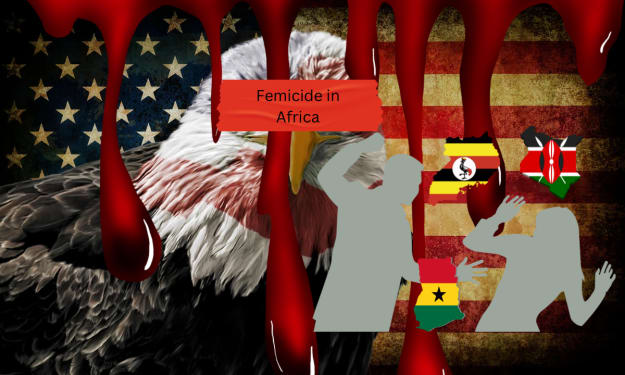
I just saw the film Loving recently. My knowledge of the Loving v. Virginia US Supreme Court Decision is relatively new. Growing up, many facets of civil rights history are drilled into us, such as the Thirteenth Amendment, Dr. Martin Luther King Jr., Brown v. Board of Education, the civil rights legislation of the sixties, and so on. Most people, including maybe even your teenagers, can say at least the bare minimum of these topics.
Long story short, the Loving v. Virginia decision rules miscegenation laws, as in laws banning interracial marriage as unconstitutional. The Lovings' home state of Virginia had outlawed interracial marriage. The couple had to accept jail or leave the state. Their case was appealed and finally reached the US Supreme Court and the rest is history.
Nowhere in any of my classes or history textbooks in school was this case ever brought up or even addressed! Throughout my college career, I have taken courses in regards to constitutional law and history, where they address the Dredd Scott decision and again, Brown v. Board of Education. Why is it, it took just some random, empathetic browsing on Wikipedia that I stumbled upon this case by accident? We do not consider it a major staple in civil rights history! Why is this? I dare argue it begins ever before Supreme Justice Earl Warren and the Associate Justices delivered their decision on that fateful day in 1968.
Twentieth Century Civil Rights
Beginning in the Progressive Era, civil rights takes a permanent back seat to all sort of various economic and political reforms. Republican, who since the era of abolitionists, were primarily the party of civil rights, jumped onto the Progressive bandwagon. Any real progress in civil rights does not pick up until President Truman. The commander-in-chief saw how blacks returning from World War II were being treated. In July of 1948, he issued Executive Order 9981. In it, he states:
"That there shall be equality of treatment and opportunity for all persons in the armed services without regard to race, color, religion or national origin."
Responses to President Truman's order were mixed at best. Of course, you had voices of bigotry against the president's decision. Secretary of the Army Kenneth Royall stated that the army “was not an instrument for social evolution.” This reasoning is still used to this day, even though it begins with the American Civil War with freedmen. The US Navy was the quickest to integrate, as most of its organization already was. US Army was quite hesitant. By 1953, when Truman was leaving office, 90 percent of the military had been integrated. This is a much better track record than school integration for example. That will take roughly twenty years.
Part of the reason this order is far from controversial is the nature of whom it concerns. This came at the time of the Korean War, which was something of a losing war in the beginning. Our armed forces needed whatever help they could obtain. We are simply integrating soldiers together to do a job. Integration of our soldiers was needed for expediency to accomplish their mission, not for any radical, liberal agenda as some may construe. Hence, this order is passable.
School Integration
You know the Brown v. Board of Education case. You know of Little Rock Nine and George Wallace's "segregation now, segregation tomorrow, segregation forever." What if I told you though that roughly a year after the decision, a majority of people approved of the decision. In fact, 55 percent approved and 40 percent disapproved. The numbers fluctuate, with the highest disapproval rating at 44 percent and the approval rating as low as 52 percent. Nonetheless, the majority was also behind supporting the US Supreme Court's decision. By 1994, 87 percent support the decision.
Keep in mind it was still not an easy road. Full integration does not come into full effect until the seventies under President Nixon. Later on, there is the added issue of bussing. Parents even feared that mixing black and white students together could lead to sex between the two. Their Birth of a Nation fears of the black mongrels were being stirred!
I do believe part of the reason the majority did approve was given, similar to the military this can be seen as for expediency. Just because black and white students will cohabit the same classroom, does not mean they necessarily have to like one another. Teachers and school administrators would still hold some authority as well. Although none of their business, could you imagine a white teacher in the fifties truly defending a black student? Of course, this is not to say all teachers acted like this. Just remember the context of race and authority at the time. Plus, a school's student body is made up of that district's citizens. Neighborhoods are still segregated at this time. The idea of many black students pouring into a white, middle-class, suburbia school is unlikely. At least, until bussing comes into play.
Life After Loving
We as Americans, mainly whites, have created this narrative that after Dr. King and the civil rights legislation of the Johnson administration, that we have defeated the heinousness of racism. Finally, we live in a post-racial America. "Post-racial, haha, that was a complete and total load of bullshit." Only 20 percent of people in America approved of the Loving v. Virginia decision. Approval of the case by whites was only 17 percent, compared to 56 percent approval by blacks. Now think about those numbers in comparison to school integration, where right off from the bat, a majority of Americans approved of it. A majority approval or interracial marriage will not come until the mid-nineties, believe it or not!
There is roughly 90 percent support and approve of interracial marriage today. Wipe hands, crisis averted, post-racial America and the problem is gone! Right? Wrong! Again, why is this case not discussed? Why is it not in our kids' history books? One, is the low approval rating until the mid-nineties. Therefore, could you imagine any reference to it in any textbook publications between 1968 and 1994? Those who grew up during this period are less than likely to address it in either textbooks or the classroom.
I do believe part of the problem stems from what comes from or what is expected from a marriage — children. In the case, Virginia's defense was that they felt it was unfair for the Lovings to bring mix children into a world that will not accept them. In essence, they see the kids as bastards. Strangely, Virginia is right on the first point, but that is due to their own fault and others in creating this intolerant, racist society and system. Interracial couples admit this problem of how to raise their child. Will he or she be raised as black or will they be raised as white? In America, for the longest time, one drop of black blood as they say, means you are black. Not all parents saw it this way, but knew their children would receive this treatment.
In the Loving Generation, you have hyper-sensitive parents on the issue of race. Another case has a black father threating to throw a white baby doll for his daughter in the trash. His white wife retorts him if he will throw her in the trash as well. One man's mother disowns him for marrying a black woman. One parent preferred to defend whiteness, rather than her own daughter. Hence, intermarrying did not truly fix the schisms between black and white Americans. As one woman of the Loving Generation noted, just because you marry a black man, does not mean you all of a sudden understand race. Meanwhile, the kids have to decide what to identify as. This becomes more problematic once kids grow up and move onto high school. Do they hang out with the white kids or the black kids? To this very day, high schoolers remain extremely cliquish, rather it be race or not. Growing up most of my own life in St. Louis, I always noticed how students segregate themselves in the cafeteria. One huge corner was always black. The idea now of being 'mixed' is just now becoming an identity for people now.
Look around and you can find other personal stories, such as a married couple where the wife's family will not allow her black husband to come home with her. Her family even prays for them to not to get pregnant. Look hard enough, and you can find plenty of personal modern stories like this. When I began dating a black girl, I told a close friend of mine. He was fine with it but noted he could never bring a girlfriend outside of his race home to his father.
Other stories include the outrage from many to the interracial couple in 2013 Cheerios commercial. A similar problem came in 2016 with an Old Navy ad as well. Tom Brokaw recently attacked Hispanics for failing to assimilate and stated how some Americans aren't sure if they want "brown grand-babies."
Yes, approval for intermarriage is at an all-time high. This does not mean you still don't have those obstructionists against it. A select few see intermarriage as a positive, among those are young people ages 18-29, those with bachelor's degrees and who are Democrats. There is no Southern Strategy approach in attacking intermarriage with terms such as states' rights or law and order. Finding the term to denote your disapproval for intermarriage while remaining as non-racist does not exist. Time after time does show this is an issue we still are not to terms with. I now fear in a Trump America with the Alt-Right and rising stars such as Richard Spencer, that the Lovings will remain buried in history.
Sources:
Encyclopedia Britannica — Executive Order 9981
Gallup Poll — Race and Education 50 Years After Brown v. Board of Education
Gallup Poll — In US, 87% Approve of Black-White Marriage, vs. 4% in 1958
Pew Research Center — Public Views on Intermarriage
ORIGINS: Current Events in Historical Perspective — Interracial Marriage in "Post-Racial" America
About the Creator
Skyler
Full-time worker, history student and an avid comic book nerd.






Comments
There are no comments for this story
Be the first to respond and start the conversation.